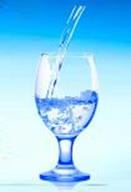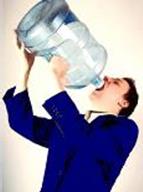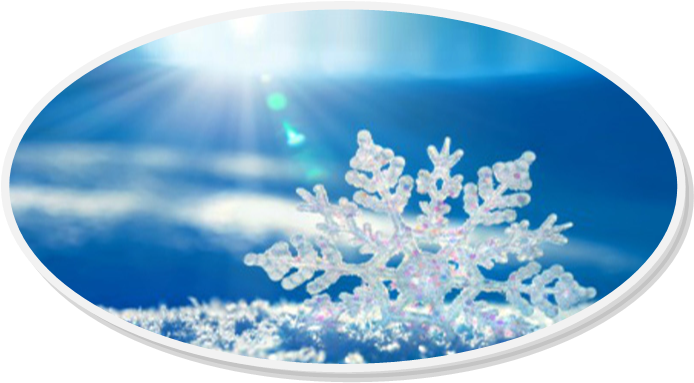|
Water Structuring Units Since 2009 |
|
Hydration Tips Water Facts and Myths
The body’s hydration levels are terrifically supported by Structured Water, because it is absorbed more readily by the cells, than any other water.
Six Tips for Staying Hydrated
Eight Myths about Dehydration
Myth #1
Dehydration is relatively rare and occurs only when the body is deprived of water for days.
Reality: Low-grade dehydration (versus acute and clinical dehydration) is a chronic, widespread problem that has major impacts on well-being, energy, appearance and resiliency. Christopher Vasey, ND, a Swiss naturopath and author of The Water Prescription (Healing Arts Press, 2006), believes that most people suffer regularly from this type of chronic dehydration because of poor eating and drinking habits.
Myth # 2
The body needs eight, 8-ounce glasses of water daily.
Reality: The body does need a steady supply of water to operate efficiently and perform the many routine housekeeping tasks needed for good well being. . That said, there is no scientific evidence to back up the very specific and well-worn advice that you need to drink eight, 8-ounce glasses of water a day (a.k.a. the 8 x 8 rule). In 2002, Heinz Valtin, MD, a retired physiology professor from Dartmouth Medical School and author of two textbooks on kidney function, published the definitive paper on the subject in the American Journal of Physiology. He spent 10 months searching medical literature for scientific evidence of the 8 x 8 rule only to come up empty-handed.
In 2004, the Institute of Medicine (IOM), a division of the National Academy of Sciences, actually set the adequate total-daily-water intake at higher than 64 ounces – 3.7 liters (125 fluid ounces) for men and 2.7 liters (91 fluid ounces) for women. But those numbers refer to total water intake, meaning all beverages and water-containing foods count toward your daily quota. Fruits and veggies, for example, pack the most watery punch, with watermelon and cucumbers topping the list.
But the “it all counts” dynamic cuts both ways. Vasey believes that many people suffer from low-grade, chronic dehydration because of what they are eating as well as what they are drinking. The “I don’t like water” crowd could probably make up their water deficits by eating the right kinds of foods, he asserts, “but most don’t eat enough fruits and vegetables. Instead they eat meat, cereals and breads, which don’t have much water and contain a lot of salt.” Animal proteins require a great deal more moisture than they contain to break down, assimilate and then flush from the body. And many processed foods, such as chips and crackers, for example, are nearly devoid of moisture, so – like dry sponges – they soak up water as they proceed through the digestive system.
The body requires only 3 to 5 grams of salt a day to stay healthy, but most people gobble up 12 to 15 grams of the stuff daily. To rid itself of the overload, the body requires copious amounts of liquid.
Myth #3
The absence of thirst indicates the body is hydrated.
Reality: As water levels in the body drop, the blood gets thicker. When the concentration of solids in the blood rises by 2 percent, the thirst mechanism is triggered. The body’s can chronically lack water at dehydration levels that are below the trigger point.
Myth #4
Hydrating is all about water.
Reality: Nope. It takes a delicate balance of minerals, electrolytes and essential fatty acids to get and keep water where it needs to be – properly hydrating your bloodstream, your tissues and your cells.
Minerals, especially electrolytes and trace minerals, are essential to maintaining cellular equilibrium. Minerals help transport water into the cells, where they also activate enzymes. And enzymes are the basis of every biological process in the body, from digestion to hormone secretion to cognition. Without minerals, says Haas, enzymes get sluggish and the body suffers. Without essential fatty acids – which form the basis for cellular membranes – cells can’t properly absorb, hold and stabilize the water and other nutrients they’re supposed to contain.
Myth #5
Healthy urine is always clear.
Reality: Urine color is directly linked to hydration status because the yellow tint is a measure of how many solid particles, such as sodium, chloride, nitrogen and potassium, are excreted. The color’s intensity depends on how much water the kidneys mix with the solids. Less water equals darker urine. More water equals lighter urine. Dark or rank-smelling urine are signs the body may need more water. But light-to-medium yellow urine is fine. Very clear urine may actually be a signal that the kidneys are taxed by the amount of fluid moving through them and the minerals are being too diluted. Also note that some vitamins, such as riboflavin, or B2, and nutritional yeast can turn urine bright yellow.
Myth #6
Drinking too much water leads to water retention.
Reality: The body retains water in response to biochemical and hormonal imbalances, toxicity, poor cardiovascular and cellular health – and, interestingly, dehydration. “If you’re not drinking enough liquid, your body may actually retain water to compensate,” says Vasey, adding that a general lack of energy is the most common symptom of this type of water retention. “Paradoxically, you can sometimes eliminate fluid retention by drinking more water, not less, because if you ingest enough water, the kidneys do not try and retain water by cutting back on elimination,” he explains.
Myth #7
You can’t drink too much water.
Reality: Under normal conditions, the body flushes the water it doesn’t need. But it is possible – generally under extreme conditions when you are drinking more than 12 liters in 24 hours or exercising heavily – to disrupt the body’s osmotic balance by diluting and flushing too much sodium, an electrolyte that helps balance the pressure of fluids inside and outside of cells. That means cells bloat from the influx and may even burst.
While the condition, called hyponatremia, is rare, it happens. Long-distance runners are at highest risk for acute hyponatremia (meaning the imbalance happens in less than 48 hours), but anyone can get in trouble if they drink water to excess without replacing essential electrolytes and minerals. Extreme overconsumption of water can also strain the kidneys and, if drunk with meals, interfere with proper digestion.
Vasey hopes that health-motivated people will return to the simple pleasures of water in much the same way they’ve recently rediscovered the myriad benefits of whole foods over heavily processed and aggressively marketed industrial fare. “Nature gave us water, not soft drinks,” he says. “It’s time to get back to basics.”
Myth #8
When it comes to hydrating, all beverages are created equal.
Reality: Not so. In principle, the 90 to 125 (or so) ounces recommended by the Institute of Medicine would include your morning coffee, the soda you drink with lunch and even a glass of wine at dinner. Practically speaking, however, caffeinated, sweetened and alcoholic drinks pack chemical cargoes (or trigger chemical reactions) that demand significant amounts of fluid to properly process and filter. As a result, non-water beverages can actually set you back, water-wise, many experts suggest. “They can actually dehydrate the body,” says Haas.
For example, says Vasey, drinks like coffee, black tea and cocoa are very high in purines, toxins that must be diluted in large quantities of water to be flushed from the body.
Artificially sweetened drinks add to the body’s toxic burden. Sugar and coffee also create an acidic environment in the body, impeding enzyme function and taxing the kidneys, which must rid the body of excess acid.
Moreover, says Vasey, caffeine found in coffee, black tea and soft drinks adversely affects your body’s water stores because it is a diuretic that elevates blood pressure, increasing the rate of both the production and elimination of urine. “The water in these drinks travels through the body too quickly,” says Vasey. “Hardly has the water entered the bloodstream than the kidneys remove a portion of the liquid and eliminate it, before the water has time to make its way into the intracellular environment.”
Take Your Health Home to Nature.
|







